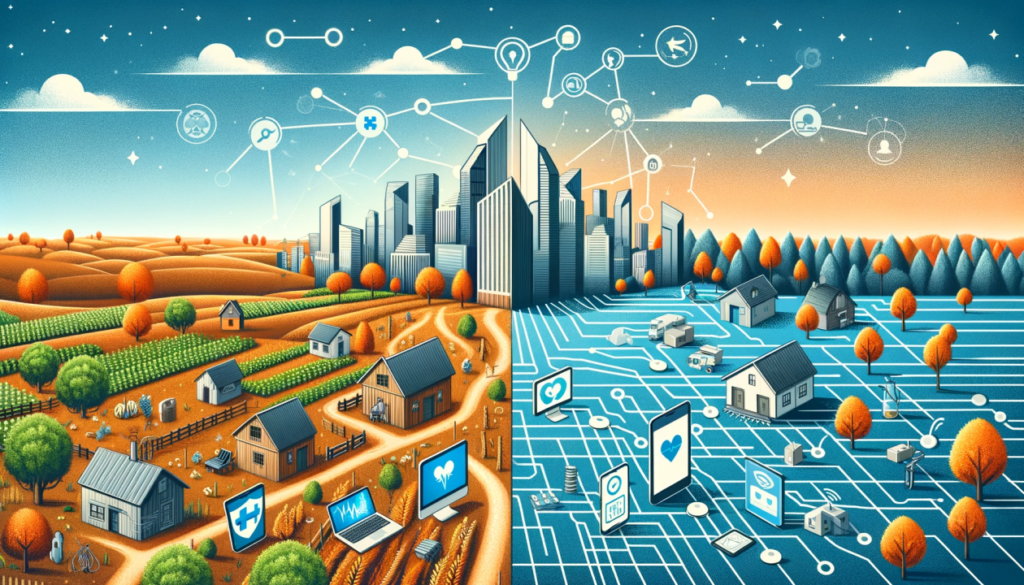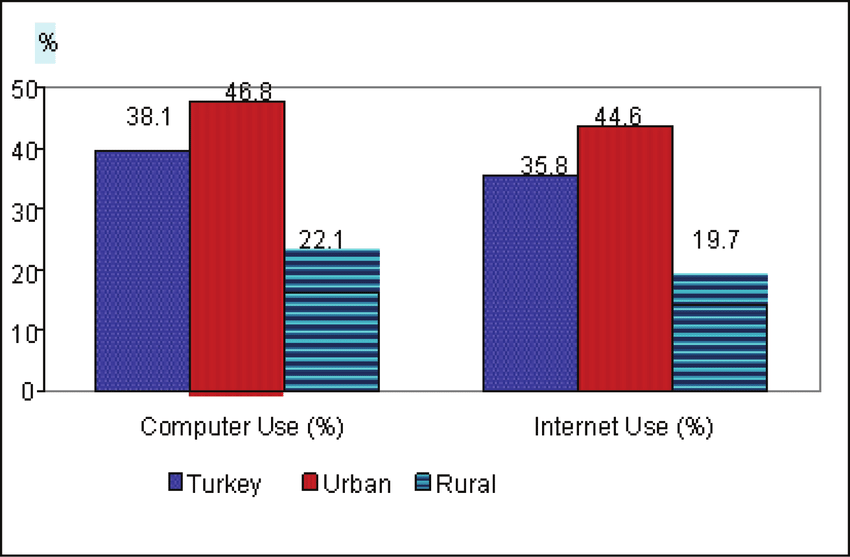
In today’s world, fast internet and access to digital tools are no longer luxuries—they are basic needs. From online education and remote jobs to virtual healthcare and digital banking, everything depends on internet access. But in the United States, not everyone is on the same page. A deep digital divide exists between urban and rural areas, affecting millions of Americans. This gap not only limits opportunities but also increases inequality across the country.
Let’s understand how this divide continues to grow and what is being done to bridge it.
Table of Contents
What Is the Digital Divide?
The term “digital divide” refers to the gap between people who have easy access to digital technologies—such as the internet, computers, and smartphones—and those who do not. In the U.S., this divide is especially clear when comparing urban and rural areas.
Urban areas often enjoy high-speed internet, updated devices, and a range of online services. In contrast, many rural communities struggle with slow connections, outdated infrastructure, and limited access to digital tools.
The Numbers Tell the Story
According to a report by the Federal Communications Commission (FCC), nearly 14.5 million Americans in rural areas still lack access to high-speed broadband. In contrast, less than 1% of urban residents face this issue. This means that students, job seekers, and small businesses in rural areas are falling behind simply because they can’t get online properly.
A Pew Research Center survey also revealed that while 97% of urban adults use the internet, only 85% of rural adults do. That 12% difference translates to millions of people disconnected from today’s digital economy.

Why the Divide Exists
1. Lack of Infrastructure
Laying fiber-optic cables and setting up towers is expensive. Companies often avoid investing in rural areas because the return on investment is low. With fewer people spread across larger areas, it costs more to deliver internet services.
2. High Costs
Even when service is available, it is often more expensive in rural areas. Many families can’t afford the monthly charges or the cost of devices needed to access the internet.
3. Limited Digital Literacy
In many rural communities, people may not have the skills or confidence to use digital tools effectively. This adds another barrier to closing the gap.
4. Slow Policy Implementation
While the government has programs to improve rural connectivity, the rollout is often slow and filled with bureaucracy. This delays much-needed progress.
Impact on Rural Communities
The digital divide affects almost every part of life in rural America:
Education
During the COVID-19 pandemic, schools shifted online. While students in cities attended virtual classes from their laptops, many rural students struggled to stay connected. Some had to sit in parking lots of libraries or fast-food restaurants just to access Wi-Fi.
Healthcare
Telehealth has become a powerful tool, especially in areas without hospitals. But in rural zones with poor connectivity, patients can’t talk to doctors online or access electronic health records. This delay in care can have serious consequences.
Jobs and Economy
Remote work is now common, but without internet, rural residents miss these opportunities. Local businesses also struggle to compete without digital marketing, online payments, or e-commerce options.
Civic Engagement
Even simple tasks like filling out forms, applying for benefits, or voting online become difficult. This weakens the voice of rural populations in democratic processes.

Urban Areas: A Different World
While rural areas are still trying to get stable connections, urban areas are racing ahead. Cities have 5G networks, public Wi-Fi zones, tech hubs, and endless digital services. Urban students learn coding from a young age, and businesses thrive using modern digital tools.
This growing difference creates two very different Americas—one digital and fast-moving, the other slow and struggling.
What Is Being Done?
Thankfully, several initiatives are working to reduce this gap:
1. Federal Funding Programs
Programs like the Rural Digital Opportunity Fund (RDOF) aim to invest billions in rural broadband expansion. These funds support companies that bring internet to underserved areas.
2. State and Local Efforts
Many states have launched their own rural broadband projects. For example, states like North Carolina and Minnesota are making strong moves to connect their remote towns.
3. Satellite Internet
New technology like Starlink, which uses satellites to beam internet directly to homes, is showing promise in areas where cables can’t reach.
4. Community Wi-Fi Projects
Some communities are building their own internet networks or partnering with nonprofits to offer public Wi-Fi.
The Road Ahead
Bridging the digital divide won’t happen overnight. It requires strong policy decisions, large investments, and community involvement. But the benefits are clear:
- More students graduating with digital skills
- Healthier populations through online medical access
- Stronger local businesses competing in the global market
- Empowered citizens taking part in democracy
By closing the gap, we don’t just help rural America—we help the entire country move forward together.
Final Thoughts
The digital divide in the U.S. is a serious issue that affects education, healthcare, jobs, and basic equality. While urban areas enjoy the benefits of a fast-moving digital world, rural areas are still left behind. But with focused efforts and the right investments, we can build a future where every American—no matter where they live—can access the opportunities of the digital age.
As the world continues to change rapidly, ensuring fair access to technology is not just about internet speed—it’s about fairness, growth, and unity.
Read More :-Top 10 Tech Hubs in the USA Outside Silicon Valley






